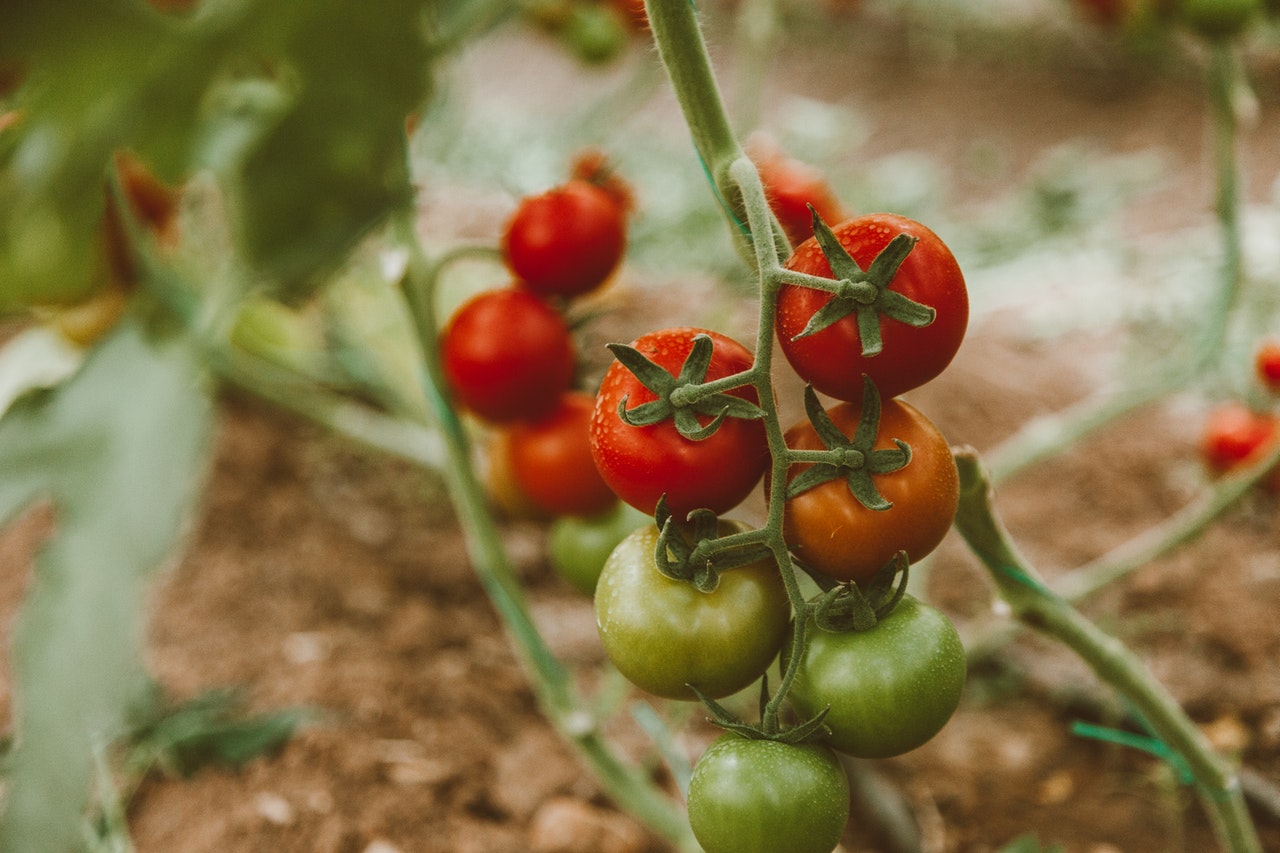Tomatoes are a crop with high nutrient requirements, both macro and micro, especially phosphorus at all stages of growth and development. They respond well to fertilization with organic fertilizers, so it is recommended to apply 25 – 40 t/ha of well-composted manure (added during basic tillage, plowing), as tomatoes are sensitive to the products that result from the decomposition of organic matter.
Mineral Fertilization for Tomatoes
During plowing, apply: 500 kg/ha of NPK 5 – 20 – 30 + 26 SO₃ or 700 kg/ha of NPK 7 – 14 – 21 + 2 MgO + 18 SO₃. Before planting, add 250 kg/ha of NPK 5 – 20 – 30 + 26 SO₃ or 300 kg/ha of NPK 7 – 14 – 21 + 2 MgO + 18 SO₃, plus 150 – 200 kg/ha of UREA 46% N.
Top dressing is done 1 – 2 times during the growing season with 100 – 150 kg/ha of CAN 27% N + 4.8 MgO. Urea and CAN are also available in small packages called Florin 6 and Florin 7. Along with nitrogen fertilizers, potassium fertilizer such as 50 kg/ha of K₂O is applied for higher quality fruits. The first top dressing is done when the first flower cluster’s fruits are the size of a walnut. Instead of foliar application, top dressing can be done through fertigation if using a drip irrigation system.
On acidic soils (pH less than 5.5), 1 – 2 months before planting, it is advisable to add 1 – 3 t/ha of Fertdolomite (calcium-magnesium carbonate), as tomatoes are sensitive to calcium deficiency, often occurring in acidic soils. Alternatively, hydrated lime (building lime) can be added at a rate of 1 – 3 t/ha to a depth of 30 cm. In addition to calcium mineral fertilizers in basic fertilization, top dressing with 0.3% calcium nitrate (Ca(NO₃)₂) or foliar fertilizers with increased calcium content such as Fertina Ca special, Calciogreen 34, Kalagreen – Ca, etc., is also recommended.
Spraying is done immediately after the first flowers appear and again two more times at 10 – 12 day intervals.
Prevention of Blossom End Rot in Tomatoes
Blossom end rot is a physiological disorder (non-parasitic) caused by calcium (Ca) deficiency in the fruit. Initial symptoms appear as small dark spots on the blossom end of the fruit, which enlarge and become sunken as the fruit ripens. Large sunken areas may develop concentric rings, with affected tissue appearing leathery and firm. In some cases, the affected area may be invaded by secondary pathogens, turning it black. Fruits can have multiple spots or one large spot that may cover half of the fruit. Symptoms of blossom end rot resemble sunscald spots, but the latter are white.
Calcium deficiency leading to this condition can result from:
- Lack of calcium in the soil (rare).
- Excess potassium in the soil; potassium inhibits calcium uptake from the soil solution through the roots. Excess potassium can result from excessive application of NPK fertilizers with high potassium content.
- Inability of the plant to absorb calcium.
- Uneven distribution of calcium in plant parts. Calcium dissolved in water moves upwards in the plant (from roots to shoots), with transpiration occurring more through the leaves than the fruit, leading to greater accumulation of calcium in the leaves while the fruit suffers from its deficiency.
Nitrogen and phosphorus uptake is consistent throughout the growing season, while the need for potassium is more pronounced during fruiting.
On acidic soils (pH less than 5.5), 1 – 2 months before planting, it is advisable to add 1 – 3 t/ha of Fertdolomite (calcium-magnesium carbonate), as tomatoes are sensitive to calcium deficiency, often occurring in acidic soils. Alternatively, hydrated lime (building lime) can be added at a rate of 1 – 3 t/ha to a depth of 30 cm.
Nutrient Content (kg of nutrients per 1 ton of fruit yield):
- N: 3.0
- P₂O₅: 1.1
- K₂O: 5.0
- MgO: 1.2
The table above shows that tomatoes require high amounts of potassium, as they are a crop that produces high fruit yields and dry matter. Potassium is an essential element in the formation of dry matter, so special attention must be paid to potassium fertilization in tomato cultivation. The required amount of potassium (based on the planned yield) should be divided into two doses. The first dose is applied once during soil preparation for planting. The second dose should be divided into weekly applications during the growing season, starting from the fruit set. Since tomatoes are sensitive to chlorine, the use of potassium fertilizers in the form of potassium sulfate is recommended.
The necessary amount of phosphorus fertilizers should be added during soil preparation for sowing/planting, while the necessary amount of nitrogen fertilizers should be divided throughout the growing cycle (the total amount of nitrogen fertilizers should be divided into weekly portions). Fertilizers can also be added through the irrigation system. Magnesium is a crucial element for fruit coloration, as it is involved in the synthesis of pigments.
Fertilization Example for Tomatoes Based on an Average Yield of 50 t/ha Using the Fertilizers Listed Below:
Nutrient Removal:
- 86 kg N/ha
- 30 kg P₂O₅/ha
- 162 kg K₂O/ha
Fertilization Recommendation:
- 96 kg N/ha
- 85 kg P₂O₅/ha
- 298 kg K₂O/ha
Fertilizers:
- NPK = 5:20:30: 710 kg/ha
- N = Urea: 75 kg/ha
Top Dressing:
- 2 x top dressing of 54 kg CAN/ha
Optimal NPK Fertilizer Formulation: 7:8:30
Nutrient Balance (Surplus or Deficit):
- N = 0 kg/ha
- P₂O₅ = 57 kg/ha
- K₂O = -85 kg/ha
Nutrient Removal:
- 86 kg N/ha
- 30 kg P₂O₅/ha
- 162 kg K₂O/ha
Fertilization Recommendation:
- 96 kg N/ha
- 85 kg P₂O₅/ha
- 298 kg K₂O/ha
Fertilizers:
- NPK = 7:14:21: 1015 kg/ha
Top Dressing:
- 2 x top dressing of 54 kg CAN/ha
Optimal NPK Fertilizer Formulation: 7:8:30
Nutrient Balance (Surplus or Deficit):
- N = 1 kg/ha
- P₂O₅ = 57 kg/ha
- K₂O = -85 kg/ha













































